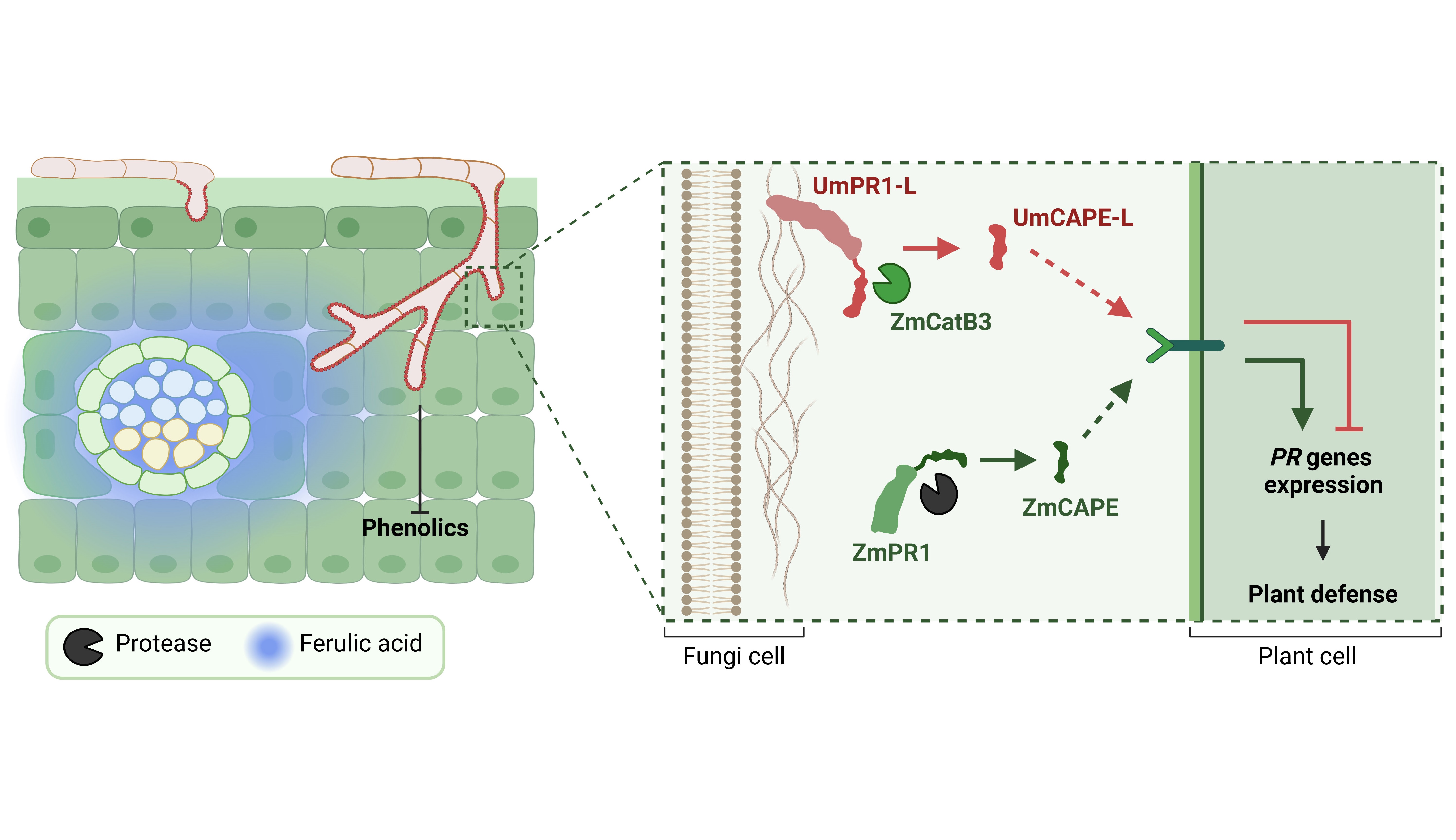Ustilago maydis PR-1-like Protein Has Evolved Two Distinct Domains for Dual Virulence Activities
Our discovery has elucidated the role of structurally conserved proteins in the ongoing co-evolutionary struggle between fungal pathogens and their host plants: the defensive role of plant PR1 and the virulence role of fungal PR1-like (PR1-L) protein. U. maydis covers its hyphae with PR1-L to resist toxic maize phenolics and hijacks the host protease CatB3 to release a mimetic peptide from PR1-L, counteracting the immunity-triggering peptide of host PR1s. This suppresses plant immunity and facilitates fungal colonization. These findings address gaps in our understanding of fungal parasitism in crops and the co-evolutionary dynamics of PR1-L and PR1 proteins in pathogens and their hosts, offering opportunities for strategic enhancements in crop defense against fungal pathogens.
Nature Communications 14, 5755 (2023).
DOI: 10.1038/s41467-023-41459-4